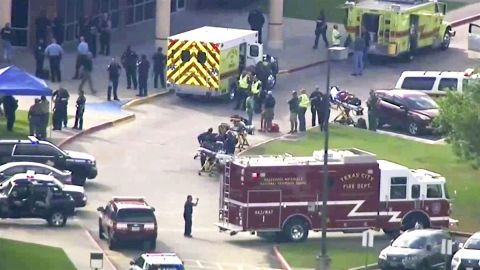5 ways to secure American schools from shooters

In a more reasonable version of America, logical gun control measures would have been dispassionately discussed and put in place a long time ago. After all, protecting kids should take precedence over any other debatable rights and freedoms. No kids dying in a place of learning should be a prerequisite for any modern society—and it is for the majority of countries around the world.
But this is not a reasonable America we live in right now and while we just won’t agree on what to do about the number of guns in the country and how easy they are to get, we should immediately start taking real measures to secure our schools. There are numerous approaches that should be considered and implemented before another tragedy strikes. Continuing to be idle while being mired in an unproductive debate is getting kids killed.
Here’s what we can consider.
Secure entrances
The Texas Lieutenant Governor Dan Patrick made a widely ridiculed statement in light of the May 18th school shooting at the Santa Fe high school in Texas that left 10 people dead. Patrick said that the number of doors in the building made the situation worse. Limiting everyone to one exit certainly seems like a terrible solution from a fire safety standpoint and for possibly not allowing students to escape in other ways in case of an active shooter situation. The criticism is also, of course, that this is yet another deflection from the GOP instead of focusing on any gun control.
It is not preposterous, however, to consider that there are often too many ways to enter a school. All entrance points should be secured and monitored while allowing for a lockdown so the problem could be localized. This would make the job of the security officers easier as well—they should at all times monitor the entry points by being there or via technological means. There should also be a feed from each school’s entry points into a centralized police rapid response task force that is there to quickly dispatch help in case of emergencies.
Are fewer entrances a fire hazard? Campus Safety Magazinemakes the distinction that “the main point of entry should look and act like the primary entry point and not a fire egress door.” In other words, there could be other secured exits in the buildings but points of entry should be limited.
Having a reinforced lobby or a double entry door system is another safety-conscious approach to school safety recommended by the magazine. It adds layers to the entry process, allowing for better screenings and will even serve as a “weather vestibule”. It should also be a place you can lock down automatically.
Metal detectors
Adding metal detectors should be a part of an overall safety approach but is also a measure that can be implemented immediately. It would take an estimated$7.7 billion to equip every one of the 133,000 schools in America with a metal detector and a security guard to run it. This is per one entrance. Two entry points would cost $15.4 billion and so forth. These are not astronomical numbers because we are talking about all the schools in the country. Combined with reducing the number of entry points, the costs can be kept manageable.
The school fortress approach
While we don’t want our kids to feel like they are studying in a prison-like environment, we also need them to be safe. Schools that prioritize safety will find ways to incorporate strong security measures both visibly for deterrence and invisibly, without compromising the learning environment.
Here’s the security setup of one school in Indiana, dubbed “the safest school in America”. It features a system with widespread panic buttons, automatic door lockdowns, red zones in the classrooms, real-time video links to the sheriff’s department, and hot zones that spew out smoke to disorient the shooter. The system costs $400,000 to install.
Trained school staff
Professional security officers, not teachers, should be part of a school’s safety budget. This could be a good opportunity to employ veterans. School staff should be trained in the use of the safety technologies utilized by the school.
Check out this podcast for ideas on how to involve veterans in school security:
Federal action
To make sure schools across the nation are complying with the safety standards equally, the government needs to create a uniform set of requirements for each school to implement to be considered “safe”, and put some money into this to help the schools carry out the directives.
It is also important to institute real deterrents specific to mass shootings that severely penalize the people whose guns are used in the incidents. As we know, the shooter at the Santa Fe High school got his gun from his father. As reported by the Pew Research Center, only 66% of gun-owning American keep their guns in a locked place. So at least a third don’t. Only 59% take gun safety courses, and only 44% keep all their guns unloaded. Strong legal and financial repercussions should be considered to make gun safety a top priority for gun owners.
And of course, it goes without saying, but we’ll say it anyway: the problem is still in the incredible number of too-easily-accessible guns. While we duke out that issue, we have both the resources and hopefully the real will to come together on the unifying mission to keep our children safe by making schools more secure.





